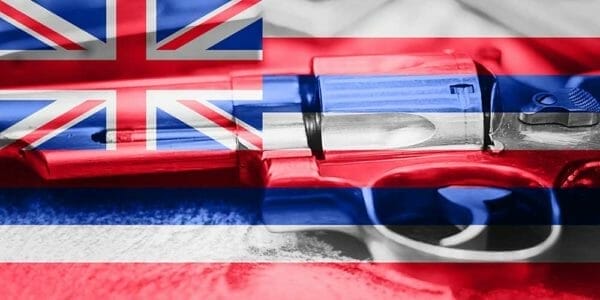
U.S.A. –-(AmmoLand.com)- On 24 September 2020, the Ninth Circuit Court of Appeal heard the oral arguments in a virtual en banc panel to re-hear the case.
The three-judge panel had held the Hawaii law violated the Second Amendment of the Constitution because it did not allow ordinary citizens a way to bear arms outside of the home for self-defense.

The Ninth Circuit has established a tradition of re-hearing cases favorable to the Second Amendment and not re-hearing cases which are not favorable to the Second Amendment. This gives the Ninth a second chance to derail an effective Second Amendment.
President Trump has appointed 10 judges to the Ninth Circuit. There are 29 active judges on the Ninth Circuit. Judges to en banc panels are chosen, to some extent, randomly. There are eleven judges on a Ninth circuit en banc panel.
In the panel for the review of Young v. Hawaii the judges and the presidents who appointed them are listed below:
- Bybee G. W. Bush
- Callahan G. W. Bush
- Clifton G. W. Bush
- W. Fletcher Clinton
- Friedland Obama
- Ikuta G. W. Bush
- McKeown Clinton
- Nelson Trump
- O’Scannlain Reagan
- Thomas Clinton
- Wardlaw Clinton
The panel has six appointees from Republicans, and five from Democrats. This shows the changing nature of Ninth Circuit, which now has 16 active judges appointed by Democrats and 13 active judges appointed by Republicans.
This panel may either uphold the three judge panel or overturn the panel’s decision, but the en banc panel will hear the case fresh, or de novo.
It is not worth much time to attempt to predict a panel decision from the oral arguments.
The oral arguments are less than an hour long. Oral arguments seldom have much effect on a case.
Here are a some impressions from the video.
The attorney for Young, Beck, does a workmanlike job. He lacks polish, but he is generally prepared. He hesitates at times, searching for the right word, but eventually finds it. After 17 attorneys refused to take the case, he took the case pro-bono (without charge).
Beck says his client would be perfectly happy with either open or concealed carry. He gets his points across. He has great material, but his presentation is hesitant.
His adversary, Attorney Neal Kumar Katyal, representing the State of Hawaii, is known as a rock-star for his presentations before federal courts on Constitutional issues. He is one of he best hired guns which can be had, for presenting oral arguments to an appeals court or to the Supreme Court.
He has significant experience at this level. It shows. His presentation is flawless.
He has terrible material to work with. His logic, such as it is, goes thus:
Heller held some restrictions on the Second Amendment were allowed. Other states, allowed and have allowed restrictions on open carry.
He groups those restrictions into a class he calls “good cause” restrictions, which is to say, a person has to show good cause before a gun can be carried.
He claims “good cause” restrictions are Constitutional, because there were a lot of them over the years. He claims the history is categorically on his side ( it isn’t).
Then, he claims Hawaii’s law is a “good cause” law, because, occasionally, someone in Hawaii, very rarely, is allowed to carry a gun openly, for very restrictive reasons.
The presentation is slick. The logic is bizarre.
In effect, this is a clash of two judicial philosophies.
One, the originalists and textualists, say the Constitution means things, the meaning is what was meant originally, and the Constitution may only be changed by the amendment process.
The second is the Progressive philosophy. In the Progressive philosophy of the courts, the courts serve as an activist branch of government, changing the law at will, as they see the need to change it. In this thinking, clever wording can always be found to change the meaning of the Constitution to what the Progressives want with any particular case.
For example, Attorney Katyal admits that carry outside the home may be part of the core of Second Amendment rights. But, he says, as long as a law has the potential to allow someone at sometime to carry outside the home, the right to carry outside the home is satisfied, even if those people are limited to 1 or 2 for an entire state over years. The key is that the law allows some potential for carry outside the home.
In effect, his logic has flipped an individual right into a government power.
The results of the en banc review will only delay what happens with this case.
It is likely either side will appeal the result to the Supreme Court.
The appointment of a new Justice to the Supreme Court of the United States will have far more effect on this case than the oral arguments in Young v. Hawaii.
About Dean Weingarten:
Dean Weingarten has been a peace officer, a military officer, was on the University of Wisconsin Pistol Team for four years, and was first certified to teach firearms safety in 1973. He taught the Arizona concealed carry course for fifteen years until the goal of Constitutional Carry was attained. He has degrees in meteorology and mining engineering, and retired from the Department of Defense after a 30 year career in Army Research, Development, Testing, and Evaluation.
